When I wake during the night I hear rain falling outside. In the morning I head to the forest, where all is damp and the air is fresh. As always, my senses are on full alert. Today nature is trying to fool me. My senses tell me conflicting stories. It feels like winter; the air is cold, the wind whistles past my arms, the drizzle falls lightly on my face. But even though I feel winter, I clearly see spring. I will not be deceived into thinking winter is upon us again because all around me is visual evidence of warmer weather and the progression of the seasons.
I see flowers and grasses ready to explode. Buds are pent-up balls of energy, waiting for the right moment to burst. The stem of the Grass Trigger Plant is a pink cone with the flowers at the base of the stem already open while the upper flowers remain tightly shut. The Bulbine Lily presents a similar picture, the buds at the top of the stem still tightly balled up. A Grey Parrot Pea displays all stages of flowering; some buds have already burst into the classic pea flower; some flowers are half-open, resembling lipstick being wound from a tube, while yet other green pods shield undeveloped flowers. Blue Pincushion flower-heads are not yet blue, but slight tinges of lavender are visible through closed buds. Yellow anthers protrude from some of the Pale Flax Lily flowers whilst others are still preparing themselves for the big reveal. Yellow Strawflowers resemble mini balls of blazing sunshine growing ever larger as they lift from the horizon. Spikelets composed of many florets emerge directly from the stem of a Pale Rush – the sedges are in flower too.
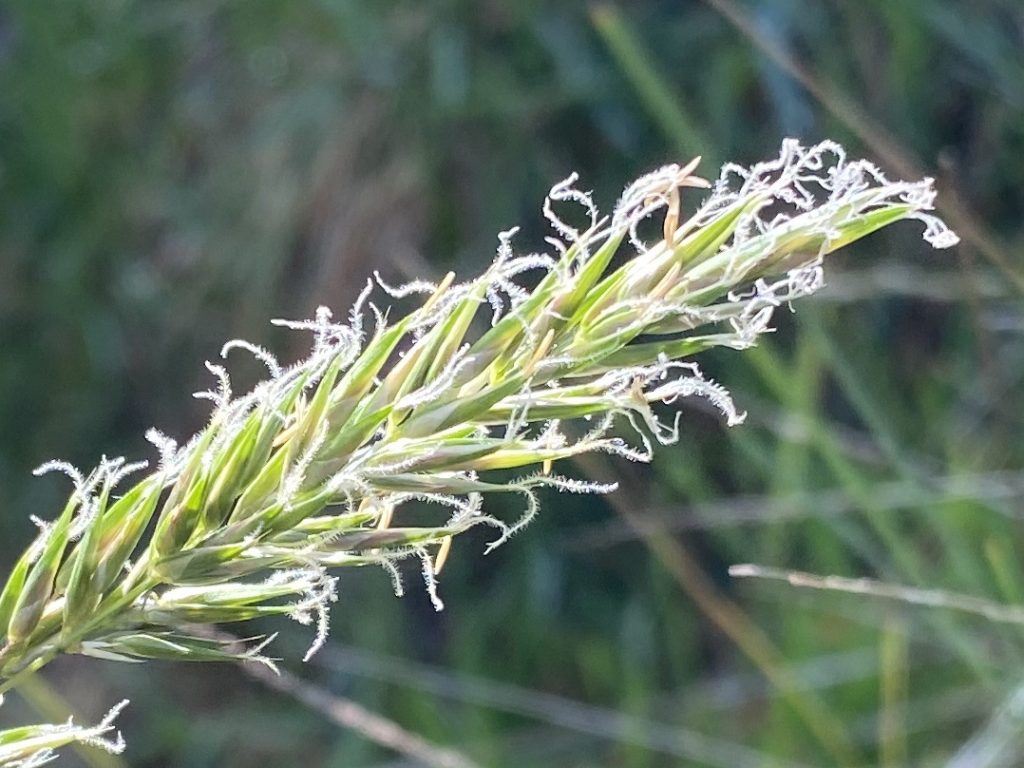
A host of other plants are already well into their flowering stage. I see white four-petalled Clematis flowers twining up their eucalypt sapling host. Letterbox-red Running Postman tumbles down an embankment. Pink Bells provide a vivid splash of colour amongst luminescent ferns. The forest floor and understorey are dotted with colour. Everything wants to be in flower. Early Nancys, Milkmaids, Twining Glycine, Twining Fringe Lily, Blue Pimpernel, Love Creeper, Rough Bush Pea, Pale Sundews, Forest Buttercups, Candle Stackhousia, Creeping Bossiaea, Wonga Vine… it is all on show.
In a damp gully, fresh fern fronds unfurl from amongst old; it looks like the soft tree ferns are wearing crowns. I know the fronds will take some weeks to straighten out and relax onto the trunk akin to satellite dishes receiving signals from space.
The orchids are all at different stages: I spot Pink Fingers, Wallflower and Donkey Orchids and a spent Wax Lip Orchid. Onion Orchids and Alpine Greenhoods are mostly already wilted. The wattles, too, are mostly spent; only some withering Cinnamon Wattle balls still cling limply to branches.
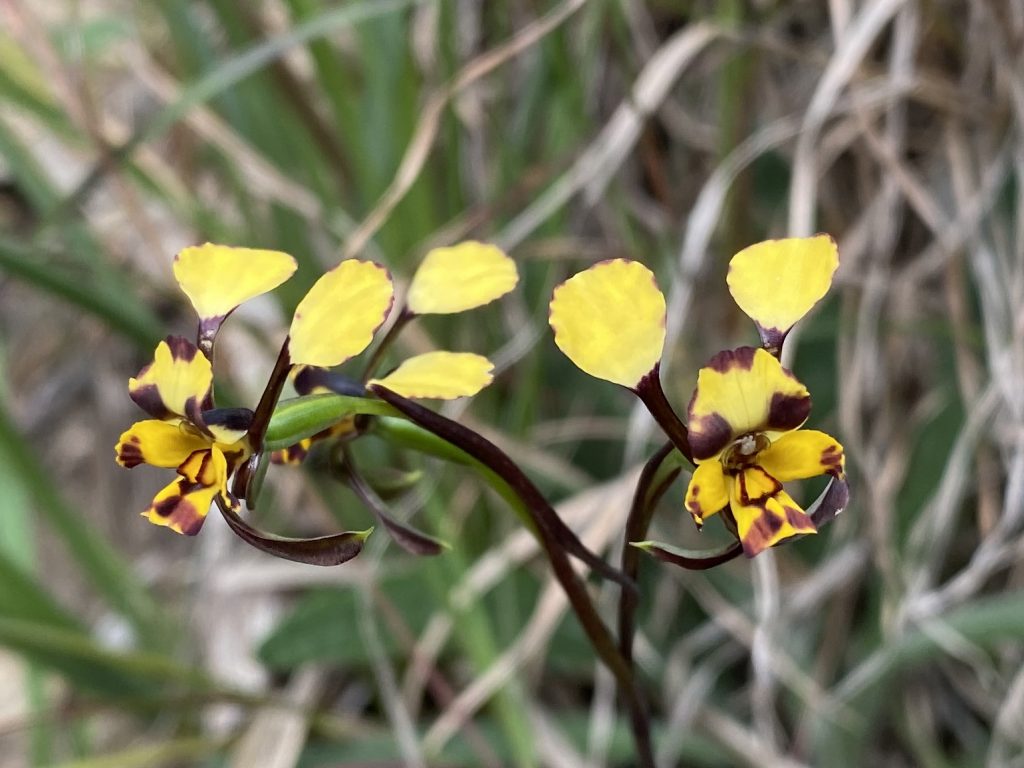
Social distancing is not hard in the forest on a day like today, but I am also far from alone. A Magpie pair struts around, picking and pecking at the ground. A Kookaburra lands nearby, unusually close. It seems as surprised as I am. It snaffles its prey and silently takes off again. The cockatoo gang is as raucous as ever. I am never sure if they are greeting me or warning each other of an intruder. Images of teenage boys come to mind. I see only one bedraggled Swamp Wallaby today; it seems we are both prepared to get a little wet whilst fossicking in the forest.
The forest is endlessly fascinating after rain; raindrops cling to blades of grass and leaves, as though an angel has come through the forest with an eye dropper, amusing herself by placing droplets of water, just so. Other plants look like they are adorned with fairy lights. If you look hard enough, there is always something of beauty to find.
I come to the forest to play, but it is not my home. It is the habitat of countless plants and animals, many of whom I will never notice even though I search with eagle eyes. It’s true I want to discover as much as I can about this forest, but I also do not come with a checklist of flora to find or treat it as a series of items to catalogue. It seems lazy and almost disrespectful to view the flora and fauna here as merely objects to name. I learn the names of the plants to honour them and give them identity. Every organism here also has a backstory and a future. I think of the words of Tim Winton in The Boy Behind the Curtain: ‘A subject has a life. In its wake and even in its form it trails a journey…’
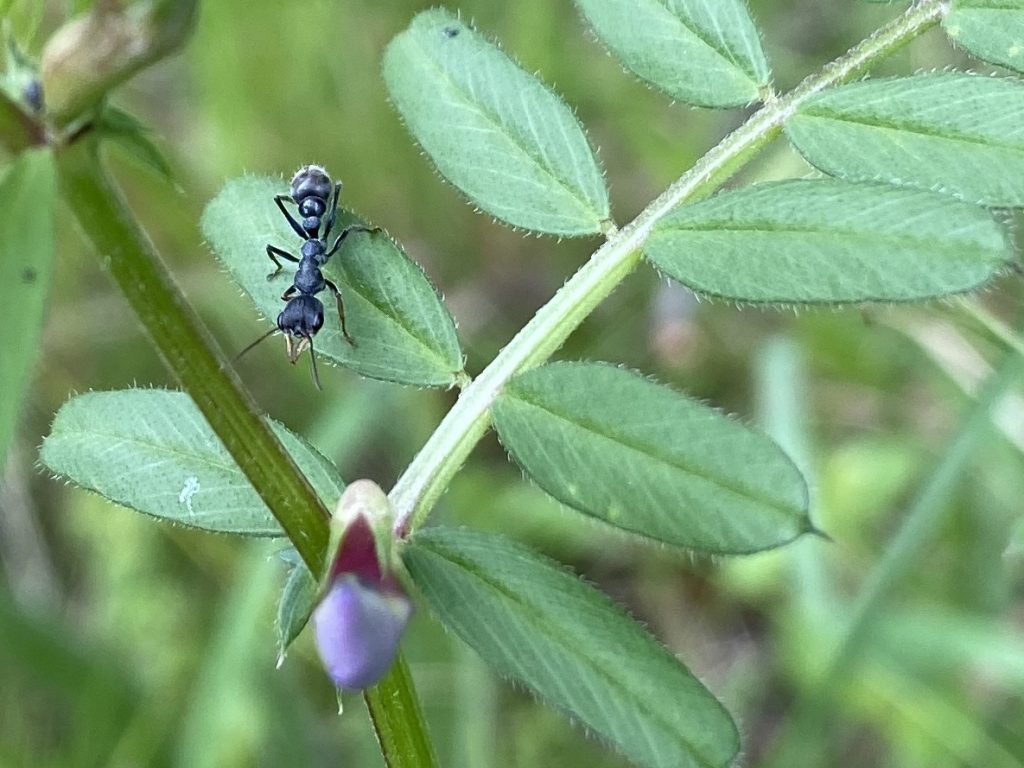
So I try to pay more attention to what is really going on, to understand the story behind what I am seeing and naming. I begin to notice shapes, detail and colour amongst all the vegetation. I see patterns in tree bark, fern fronds, flowers and leaves. I observe the light, the sky and the weather, and variances within. I look up, down and around. There is so much to see. I notice the small within the big, the detail in the vastness, I see the trees within the forest. I feel the need to touch, to learn about the bark through my fingertips. I wonder what is going on beneath the surface. I try to sense mood.
I walk tracks both ways and am surprised by the different perspective the other direction offers. It is like seeing the back of someone to give you a truer picture of who they are. How much can you garner from a front-on view only? What is behind? What is underneath? What is going on that I cannot see? I wonder what happens at night. I think about the symbiotic relationships within the forest: the importance of fungi, the interaction between trees, the cycle of water, the structure of lichen, the life cycles of plants, the timeline of growth and decay and the struggle of life to reach sunlight, seek water and survive. I see the forest not just as an entity, but as a million micro-worlds in harmony with each other. My mind is blown open.
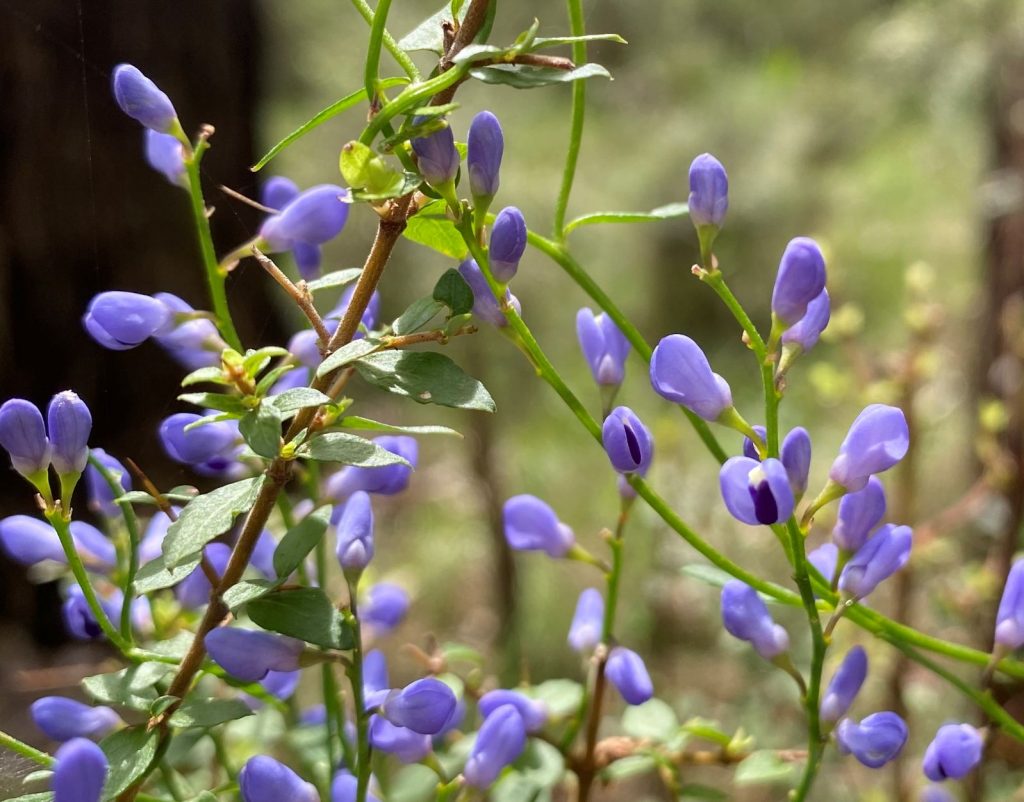
‘To tread here and never pay tribute, to glance and just see objects, is to be spiritually impoverished.’ (Tim Winton)
Perched in amongst the grand old eucalypts on the final crest of the hill has stood for many years a concrete and wooden bench. Once upon a time it had been painted. Now its slats display various colours of peeling paint and lichen. Coloured and hand-decorated wooden letters once adorned the top rung of the rear lean, pronouncing it the ‘Wishing Chair’. It looked like the efforts of a wonder-filled child. Nowadays no letters remain. Regardless, it is a marvellous place to sit, to offer thoughts and prayers, to catch your breath, to be. The forest is below, behind and around you. You are a part of it and it is part of you. If you close your eyes, you still know the forest is there, you can hear it and smell it. And even with eyes closed you can see. If you sit long enough and with enough intent, sometimes a breeze lifts or a magpie struts across your path or the sun casts a peculiar light and suddenly you feel like the forest senses your presence.
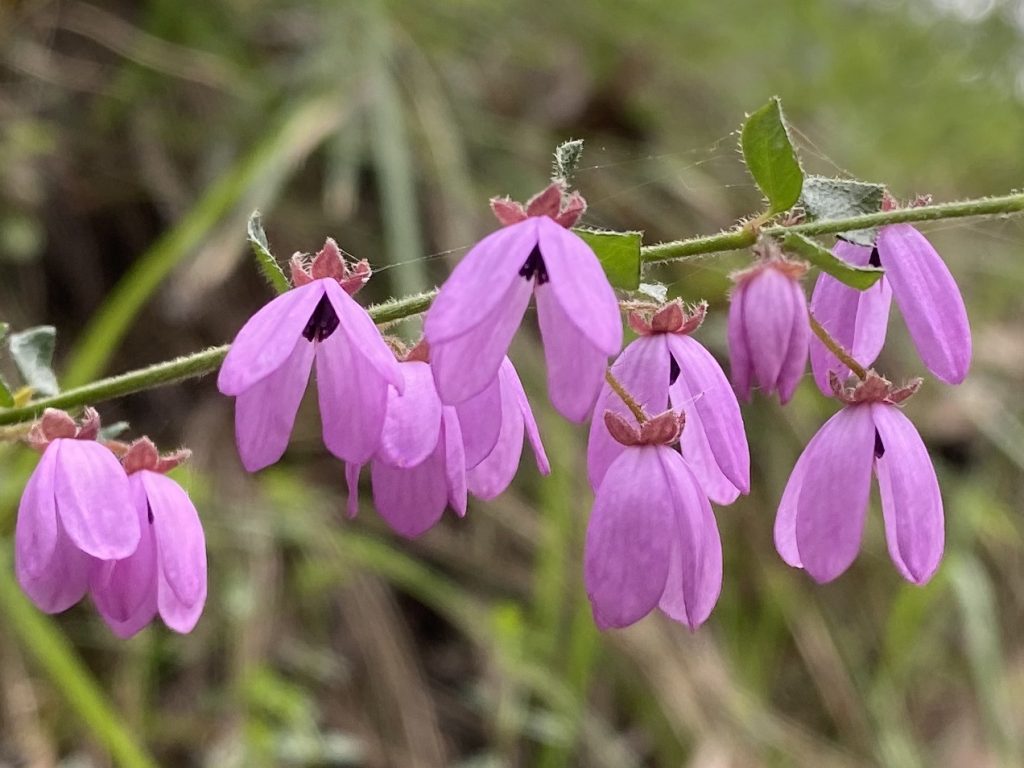
“When you observe long enough, the subject of your gaze seems, eventually, to respond. Or perhaps it’s you, the viewer, who is changed; something has stuck, something in the end, is going on between you and it”. (Tim Winton)
If you treat the forest with reverence, there is indeed always something going on between you and it. You are never far from a religious experience here. Bring all your senses, come whatever the weather, be open to awe. It is the perfect place to emerge from a Covid-induced lockdown.
Quoted extracts are from The Boy Behind The Curtain, by Tim Winton, published by Penguin Books Australia August 14, 2017.
Banner image and all images in article courtesy of Christine Ruff.

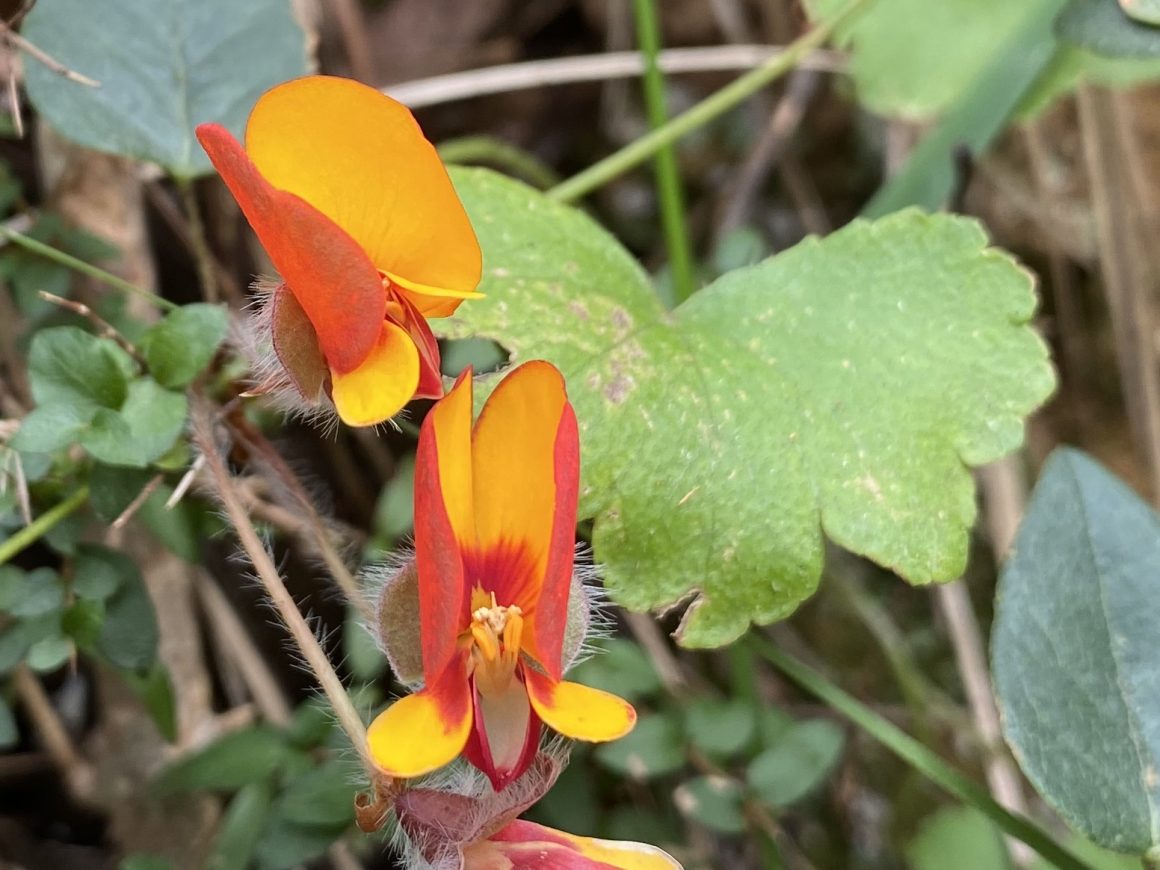
Leave a Reply